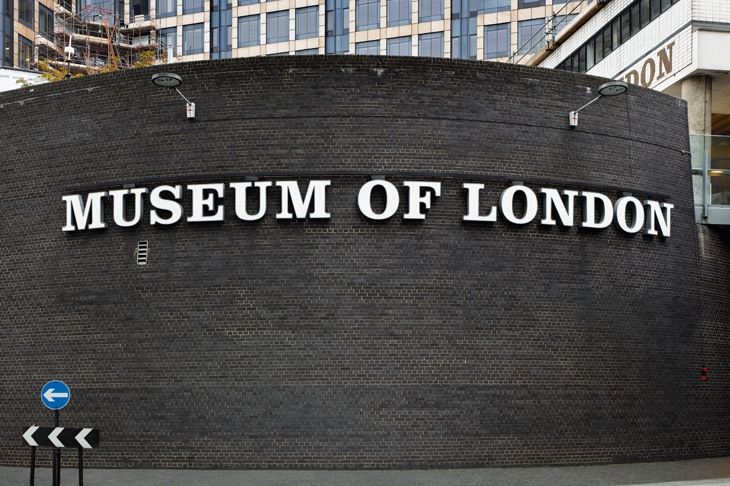Even in a Trump world where reality is what you say it is, the London Symphony Orchestra’s announcement of a new concert hall occupies a bubble of pure fantasy. New York architects Diller Scofidio + Renfro have been awarded a contract for a project that has no funding.
Concert hall, what concert hall? The only cash on the table is £2.5 million from the Corporation of the City of London. The hall is hot air. There has been no public consultation, no actuarial study of demographic need, no consideration of best possible sites or size. There is not even a consensus within the classical sector that a new hall is a top priority when audiences consistently fail to fill the Barbican and Royal Festival Hall. As for the proposed location, it’s a concrete bunker abandoned by the Museum of London because not enough people want to go there. Or ever will.
Blithely dismissing these facts, the LSO has signed up a shprauntzy New York firm to create what Sir Simon Rattle calls ‘an exceptional new place for the enjoyment and understanding of music that is welcoming and open to all’. Unlike today’s facilities, which are a deterrent and shut.
Rattle once talked up a marvellous new hall for the City of Birmingham Symphony Orchestra, but that was in the 1980s, when Brum was a post-industrial rustbucket in need of architectural Prozac and both Westminster and Brussels shelled out for regeneration. Central London in the 21st century is a forest of shards and cheesegraters, bitterly resented by most of the country for its architectural honeytraps. No government could give London a luxury concert hall without risking electoral suicide in the next ten cities. Philip Hammond has already declared the LSO’s hall unaffordable and this time there will be no cash sweetener from the EU.
How much will the fantasy cost? A preliminary survey by Sir Nicholas Hytner suggested £250 million, a figure generally scorned by those in the know. Due to the nebulous nature of musical acoustics, concert halls are horribly hard to cost. The Paris Philharmonie tripled its original budget. Hamburg’s Elbphilharmonie cost €789 million, ten times above estimate. London is looking at half a billion pounds, minimum, and where’s that coming from? Bankers will be moving to Frankfurt when Brexit kicks in and no oligarch has rushed forward to put his surname on the lintel.
These realities have yet to prick the LSO’s bubble, floated as it is by a pair of vested individuals. George Osborne, the Wagner-loving former chancellor, is puffing the project through the op-ed pages of his freesheet newspaper. And Sir Nicholas Kenyon, the Barbican’s chief executive, is Rattle’s biographer, confidant and companion on lobbying missions to the funding authorities. Faced with sceptics, Kenyon demands to know what the harm is in campaigning for a world-class hall.
Well, here’s the harm. London has been crying out for a good concert acoustic ever since the Germans bombed Queen’s Hall in May 1941. Classical music will only ever get one shot at this Shangri-La. We must get the right building in the right place at the right time — not in some dump the City wants to get shot of. The Paris Philharmonie was erected at the end of the pink Metro line, an area where young couples find affordable housing. The Elbphilharmonie dominates the Hamburg waterline. Both are acoustic marvels and drawing new audiences.
Location matters even more in London’s urban sprawl. The bulk of the concert-going public lives, according to internal BBC Proms surveys, overwhelmingly in north and north-west London. Logic dictates that Islington, Camden, Barnet and Brent should be considered first for a new hall. An alternative option would be to erect the hall to the east, in the former Olympic park where other cultural institutions — the V&A, Sadler’s Wells, University of the Arts — are making a home.
These are vital issues for music, for London, for our grandchildren. They require proper debate, not a selfie media campaign. The LSO is trying to shout its new hall into existence, to foster illusions of a fait accompli. This can only lead to another botched hall, and the loss of what may be our last chance to build a perfect philharmonie.






Comments